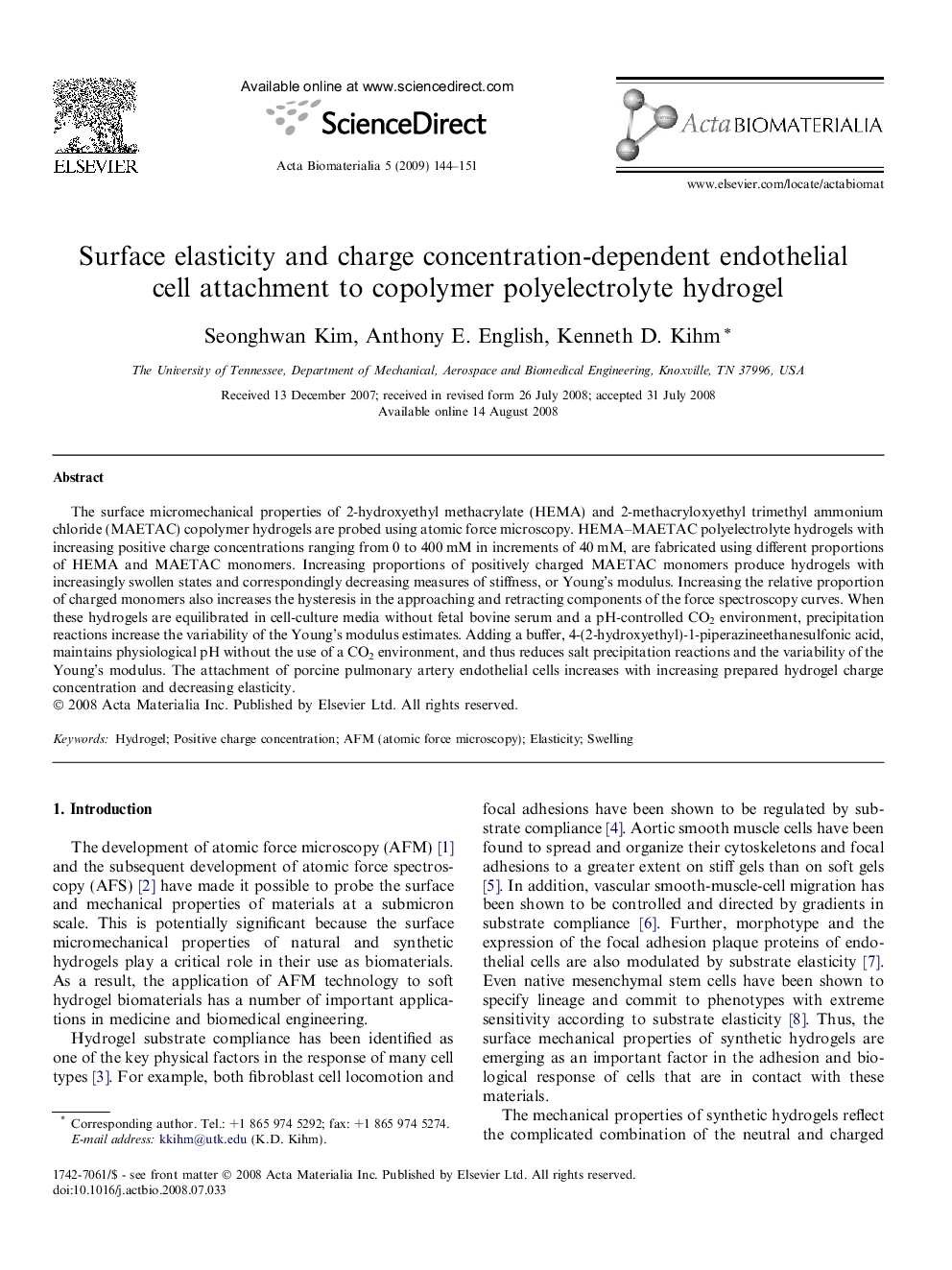| Article ID | Journal | Published Year | Pages | File Type |
|---|---|---|---|---|
| 2354 | Acta Biomaterialia | 2009 | 8 Pages |
The surface micromechanical properties of 2-hydroxyethyl methacrylate (HEMA) and 2-methacryloxyethyl trimethyl ammonium chloride (MAETAC) copolymer hydrogels are probed using atomic force microscopy. HEMA–MAETAC polyelectrolyte hydrogels with increasing positive charge concentrations ranging from 0 to 400 mM in increments of 40 mM, are fabricated using different proportions of HEMA and MAETAC monomers. Increasing proportions of positively charged MAETAC monomers produce hydrogels with increasingly swollen states and correspondingly decreasing measures of stiffness, or Young’s modulus. Increasing the relative proportion of charged monomers also increases the hysteresis in the approaching and retracting components of the force spectroscopy curves. When these hydrogels are equilibrated in cell-culture media without fetal bovine serum and a pH-controlled CO2 environment, precipitation reactions increase the variability of the Young’s modulus estimates. Adding a buffer, 4-(2-hydroxyethyl)-1-piperazineethanesulfonic acid, maintains physiological pH without the use of a CO2 environment, and thus reduces salt precipitation reactions and the variability of the Young’s modulus. The attachment of porcine pulmonary artery endothelial cells increases with increasing prepared hydrogel charge concentration and decreasing elasticity.
